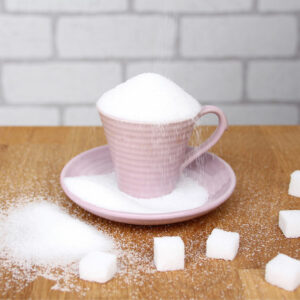6 strategies to get kids to eat better

Making kids adopt healthy eating habits can be a challenge. You have to ensure the food is not only nutritious but also tasty enough not to be left aside on the plate. But then, most parents run out of ideas over time and eventually become frustrated. So, how do you get your kid to choose the right foods and stay healthy? Here are a few tested strategies to get kids to eat better:
Give them the freedom to choose
Nobody likes to be compelled to do something, especially high-spirited toddlers and older children constantly trying to assert their autonomy. And the kitchen is not an exception to this principle. Choosing between celery with peanut butter and apple slices may not hold much significance for you; you may think both are healthy and pick either for your child on any given day. However, leaving it to your little one to decide will give them a sense of autonomy, which they seek so much. They may even agree to try new healthy dishes if they feel it is their choice.
Let them prepare their plates
Allowing children to prepare their own plates is another way of letting them feel their autonomy. It will, in turn, make them enthusiastic about trying new dishes. This may not be easy initially. Your little one may diverge from the established food guidelines of creating a balanced plate with veggies, fruits, proteins, carbs, etc. However, with appropriate guidance, they may get accustomed to the rules and be more willing to include healthy options on their plates, only to exercise their freedom to choose.
Introduce new food options
According to experts, children learn and get accustomed to the what, how, and when of food habits during the initial five years of their life. So, it is essential to introduce them to as much variety as possible when their taste buds and food habits are still developing. These include fruits, fresh vegetables, proteins, whole grains, etc. The more variety you introduce to your little one’s plate, the less likely they are to become picky eaters later. If they are unwilling to try new options or do not find their taste appealing, combine them with something they love. For example, if they find carrot sticks dull, offer some sauce to elevate the taste. Similarly, if they find broccoli unappealing, sneak the veggie into some tasty dishes like omelets or mac and cheese.
Keep tabs on their snacking habits
A child’s frequent and untimely hunger pangs are a common problem parents face. Many kids crave snacks, especially those that do not have nutritional value. But, it is highly essential to monitor snacking habits. Or else it can affect their growth and development and increase their risk of falling ill. First, ensure the portion sizes of the snacks are kept small. Then manage the out-of-schedule snacking. If your kid’s sudden bout of hunger is close to dinner time, make them taste whatever you are preparing for dinner. A heavy snack at this time will ruin their appetite and interest in dinner. It can also affect their sleep schedule and lead to other problems that are hard to manage.
Try healthy yet fun kid snacks
While offering a package of cheese crackers to a restless child may be easy, it is not an ideal tactic to promote healthy food habits. Experts say that snacks are supposed to be rich in fiber and protein so that children feel full for more extended periods. Besides, snacks are an opportunity to introduce children to new food options, most of which you can eventually incorporate into lunch and dinner. A few fun kid’s snack ideas that can get your child into healthy eating include spiced apple crisps, popcorn, almond butter spread, dried fruit energy balls, rainbow fruit skewers, and fruit smoothies. You may also try fruit-and-nut yogurt and yogurt popsicles.
Become a role model for your child
Children are highly influenced by those around them, specifically the adults in their families. So, the best way to teach them healthy eating habits is to start following them yourself and set an example. Instead of munching on harmful stuff, add plenty of veggies and fruits to your plate. And avoid overeating. Tell your child how you feel full and do not wish to have more of a delicious food item. Lastly, if your eating habits are erratic, rectify them as soon as possible to avoid sending the wrong message. A child may consider this behavior typical and eventually pick up bad eating habits.
Because kids are in their growing years, parents cannot afford to neglect their daily nutrition. To ensure your kid has a healthy mind and body development, constantly monitoring their food habits is essential. However, finding new ways to make healthy foods delicious enough to not be thrown away can be exhausting. Following these tips will make your job easier. It is best to consult a doctor or nutrition expert if unsure about giving your little one specific food because of their age or the item’s nutritional contents. Also, read the label of store-bought foods and check the ingredients.



